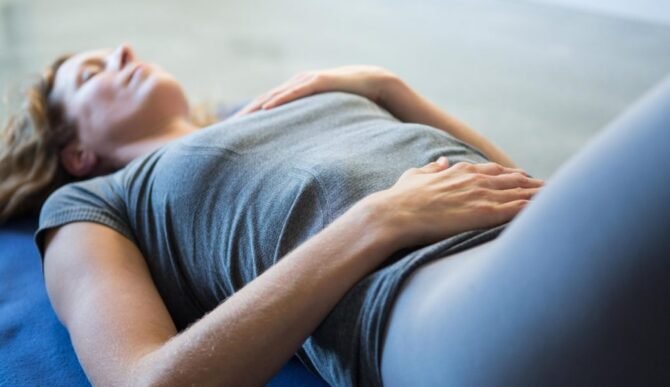Best breathing exercises to reduce stress
Stress and anxiety are common and normal emotions that we all experience from time to time. However, when they become too intense or frequent, they can have negative effects on our physical and mental health, as well as our happiness and well-being.
One of the simplest and most effective ways to cope with stress and anxiety is to use breathing exercises. Breathing exercises are techniques that involve changing the way we breathe, such as the speed, depth, or rhythm of our breaths. Breathing exercises can help us calm our nervous system, relax our body and mind, and regulate our emotions.
In this blog post, we will share with you five breathing exercises that can help you reduce stress and anxiety. These breathing exercises are easy to learn and practice, and can be done anywhere and anytime. All you need is a few minutes and a willingness to try.
Breathing Exercise 1: Deep Breathing
Deep breathing, also known as diaphragmatic breathing or belly breathing, is a breathing exercise that involves breathing deeply into your abdomen, rather than your chest. Deep breathing can help you reduce stress and anxiety by activating your parasympathetic nervous system, which is responsible for the relaxation response.
To practice deep breathing, follow these steps:
- Sit or lie down in a comfortable position. Place one hand on your chest and the other on your belly.
- Breathe in slowly through your nose, filling your belly with air. You should feel your belly rise as you inhale. Your chest should move only slightly.
- Breathe out slowly through your mouth or nose, emptying your belly of air. You should feel your belly fall as you exhale. Your chest should move only slightly.
- Repeat this cycle for at least 10 breaths, or as long as you feel comfortable.
You can practice deep breathing whenever you feel stressed or anxious, or as a daily routine to prevent stress and anxiety.

Breathing Exercise 2: Quietening Response
The quietening response is a breathing exercise that combines deep breathing with positive imagery and affirmations. It was developed by Dr. Herbert Benson, a pioneer in the field of mind-body medicine. The quietening response can help you reduce stress and anxiety by creating a sense of calmness and confidence.
To practice the quietening response, follow these steps:
- Sit or stand in a comfortable position. Close your eyes if you wish.
- Breathe in deeply through your nose, filling your belly with air. As you inhale, imagine that you are breathing in peace and relaxation.
- Breathe out slowly through your mouth or nose, emptying your belly of air. As you exhale, imagine that you are breathing out stress and tension.
- Repeat this cycle for four breaths, or as long as you feel comfortable.
- After the fourth breath, say to yourself silently or aloud: “I am calm and confident.” Repeat this affirmation for four times, or as long as you feel comfortable.
You can practice the quietening response whenever you feel stressed or anxious, or before facing a challenging situation.

Breathing Exercise 3: Mindful Breathing
Mindful breathing is a breathing exercise that involves paying attention to your breath without trying to change it or control it. It is based on the practice of mindfulness, which is the awareness of the present moment with curiosity and acceptance. Mindful breathing can help you reduce stress and anxiety by breaking the cycle of negative thoughts and emotions that fuel them.
To practice mindful breathing, follow these steps:
- Sit or lie down in a comfortable position. You can close your eyes if you wish.
- Bring your attention to your breath. Notice how it feels as it flows in and out of your body. You can focus on any aspect of your breath, such as the sensations in your nose, mouth, chest, or belly.
- Observe your breath without trying to change it or control it. Let it be as it is. Don’t judge it as good or bad, right or wrong, fast or slow.
- If your mind wanders off into thoughts about the past or future, or other things that are not related to the present moment, gently bring it back to your breath. Don’t get frustrated or angry with yourself. Just acknowledge what distracted you and return to your breath.
- Continue this practice for at least 5 minutes, or as long as you feel comfortable.
You can practice mindful breathing whenever you feel stressed or anxious, or as a daily meditation to cultivate mindfulness.

Breathing Exercise 4: 4-7-8 Breathing
4-7-8 breathing, also known as the relaxing breath, is a breathing exercise that involves breathing in for 4 seconds, holding your breath for 7 seconds, and breathing out for 8 seconds. It was popularized by Dr. Andrew Weil, a renowned integrative medicine physician. 4-7-8 breathing can help you reduce stress and anxiety by slowing down your breathing rate and inducing a state of relaxation.
To practice 4-7-8 breathing, follow these steps:
- Sit or lie down in a comfortable position. Place the tip of your tongue behind your upper front teeth and keep it there throughout the exercise.
- Breathe out fully through your mouth, making a whooshing sound.
- Breathe in gently through your nose for 4 seconds. You can count silently or use a timer if you wish.
- Hold your breath for 7 seconds. Don’t clamp your mouth or nose shut. Just avoid inhaling or exhaling for 7 seconds.
- Breathe out fully through your mouth for 8 seconds, making a whooshing sound.
- Repeat this cycle for four times, or as long as you feel comfortable.
You can practice 4-7-8 breathing whenever you feel stressed or anxious, or before going to sleep to promote relaxation and sleep quality.
Breathing Exercise 5: Alternate Nostril Breathing
Alternate nostril breathing, also known as nadi shodhana or anuloma viloma, is a breathing exercise that involves alternating between breathing through your left and right nostrils. It is a common practice in yoga and Ayurveda. Alternate nostril breathing can help you reduce stress and anxiety by balancing your nervous system and harmonizing your left and right brain hemispheres.
To practice alternate nostril breathing, follow these steps:
- Sit in a comfortable position. Use your right thumb to close your right nostril and your right ring finger to close your left nostril. You can also use your index and middle fingers to rest on your forehead or curl them into your palm.
- Breathe out fully through your left nostril, keeping your right nostril closed with your thumb.
- Breathe in through your left nostril, keeping your right nostril closed with your thumb.
- Close your left nostril with your ring finger and open your right nostril. Breathe out through your right nostril, keeping your left nostril closed with your ring finger.
- Breathe in through your right nostril, keeping your left nostril closed with your ring finger.
- Close your right nostril with your thumb and open your left nostril. Breathe out through your left nostril, keeping your right nostril closed with your thumb.
- This completes one cycle. Repeat this cycle for at least 5 minutes, or as long as you feel comfortable.
You can practice alternate nostril breathing whenever you feel stressed or anxious, or as a daily practice to balance your energy and mood.

Conclusion
As you’ve seen, stress and anxiety are common and normal emotions that we all experience from time to time. However, when they become too intense or frequent, they can have negative effects on our physical and mental health, as well as our happiness and well-being.
One of the simplest and most effective ways to cope with stress and anxiety is to use breathing exercises. Breathing exercises are techniques that involve changing the way we breathe, such as the speed, depth, or rhythm of our breaths. Breathing exercises can help us calm our nervous system, relax our body and mind, and regulate our emotions.
In this blog post, we have shared with you five breathing exercises that can help you reduce stress and anxiety. These breathing exercises are easy to learn and practice, and can be done anywhere and anytime. All you need is a few minutes and a willingness to try.
We hope that this blog post has been informative and helpful for you. If you are interested in learning more about breathing exercises for stress and anxiety and how to apply them to your own life, we recommend that you check out these resources:
- The Healing Power of the Breath: Simple Techniques to Reduce Stress and Anxiety, Enhance Concentration, and Balance Your Emotions by Richard P. Brown and Patricia L. Gerbarg
- Breath: The New Science of a Lost Art by James Nestor
- Breathe: A 28-Day Program to Transform Your Life by Belisa Vranich
Thank you for reading ! You can find more information on Health and Wellness in this blog.
Feel free to search for more useful articles and share with anyone who might benefit from it. And don’t forget to leave us a comment below with your thoughts or questions. We would love to hear from you!
